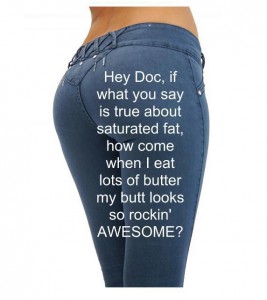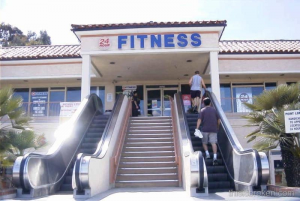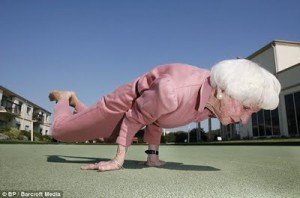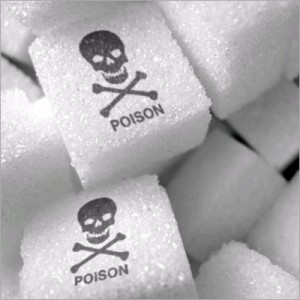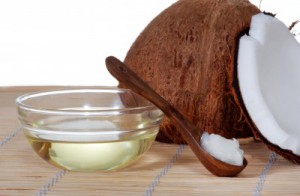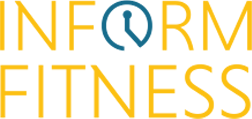
While none of us can escape the inevitability of passing time, we are not entirely powerless over our own aging process, and do not have to surrender to its effects.
I can now, with complete confidence, assert that InForm Fitness is home to the real Fountain of Youth! That’s right folks. The Power of 10 workout can reverse aging, making changes right down to the functioning of your DNA.
While you might be thinking, “Boy, Adam’s sense of self-worth has officially spun out of control,” I offer you scientific confirmation that my contentions of triumph are not unfounded.
It Comes Down To The Mitochondria.
You may be surprised to learn that in studies on aging, that science is increasingly focusing on the role of Mitochondria – the cell powerhouse that generates the majority of the body’s energy from nutrients and oxygen.
Why? Put simply, cellular damage manifests through physical and physiological signs of aging – loss of muscle mass, brain volume, skin elasticity, hair loss and pigmentation, etc., – and may be largely due to ‘malfunctioning’ mitochondria.
The inconvenient truth here is that even through their normal activity, mitochondria generate unstable chemicals that harm the cell as a whole, resulting in genetic mutations. These mutations are found to accumulate with age and over time the number of mutations overwhelms our cells’ ability to make the necessary repairs.
So, ‘malfunctioning’ can be a term used interchangeably in this sense with progressive aging, as the cells these mitochondria fuel wither, increasingly incapable of repairing themselves, and eventually die. As Martha Stewart might say, “It’s not a good thing.” (I can’t believe I just quoted Martha Stewart)
It’s an astonishing thing though, our mitochondria. Our cells can house several thousand mitochondria. The number depends on what that particular cell needs to do. If the purpose of the cell is to transmit nerve impulses, fewer mitochondria will exist than say in a muscle cell that requires substantially more energy. If the cell is lacking sufficient energy, more mitochondria can be created. Sometimes they can even grow, move, and combine with other mitochondria.
Mitochondria also have their own DNA – different from our cells’ genetic material – and are capable of mutating when they multiply. Under normal circumstances, anomalies are corrected by specialized repair systems within the cell.
And how exactly does this relate to high-intensity exercise? Specifically, human aging is associated with skeletal muscle atrophy and functional impairment, also known as sarcopenia, and multiple lines of evidence suggest that mitochondrial malfunction is a major contributor.
So what can we do to slow, halt, or even reverse the inevitable aging process?
STRENGTH TRAINING – and I’m pleased to share three scientific studies supporting my claim that InForm Fitness is the home of the Fountain of Youth.
Study # 1
Pediatrics Professor, Dr. Mark Tarnopolsky, at McMaster University in Hamilton, Ontario, discovered that exercise reduced or eliminated almost every detrimental effect of aging in mice that had been genetically programmed to grow old at an accelerated pace.
The mice that Dr. Tarnopolsky and his colleagues used were bred to lack the primary mitochondrial repair mechanism, so they did indeed age more rapidly. The study included two groupings of these mice – mice that exercised and mice that did not.
By the time the mice that did not exercise reached 8 months (equivalent to early 60s in human years), they were extremely frail, lethargic, and decrepit, with flabby muscles, shrunken brains, enlarged hearts, shriveled gonads and patchy, graying fur. On an even more extreme note, they were all dead before reaching a year of age.
The group of mice that exercised were still alive at a year of age, and remained amazingly youthful!
Study # 2
In a 2007 study, Resistance Exercise Reverses Aging in Human Skeletal Muscle, researchers Simon Melov, et al. successfully reversed human aging among healthy adult men and women, with a return toward normal youthful muscular function at the genetic level.
Wow! Essentially, the study showed that healthy older adults exhibiting evidence of mitochondrial impairment and muscle weakness could, through high-intensity exercise training, markedly reverse cellular conditions back to that of younger levels for most genes. The researchers had subjects perform exercises ranging from leg press, chest press, leg extension, leg flexion, shoulder press, pull-down, calf raise, abdominal crunch to back extensions. Sound familiar? Over the study period, the subjects increased their strength by a whopping 50%.
Practicing doctor, personal trainer and co-author of Body by Science, Dr. Doug McGuff, discusses this exact phenomenon in his blog and pleads that we need not hurt ourselves in the process.
McGuff asserts that the ability to perform high-intensity exercise is a marker of youth, and consequently what gets lost with aging. In a discussion around fast-twitch muscles (the category of muscle targeted through high-intensity exercise), McGuff explains how fast-twitch muscle fibers can be recruited through other forms of exercise training, which are fraught with the potential for injury, both immediate and over time. McGuff goes on to endorse the very type of safe and efficient, high-intensity exercise, found here at InForm Fitness, that stimulates the development of physiologic headroom, in a controlled manner not producing injurious force.
Physiologic headroom is described as “the difference between the most you can do and the least you can do.” When the difference is zero, you’re dead.
Study # 3
According to a study published in Cell Metabolism, people who exercised intensely for as little as 20 minutes, actually changed their molecular make-up.
High-intensity exercise can almost instantly determine which of your genes get turned on or off, triggering epigenetic changes within the body. These ‘epigenetic modifications’ seem to be the early precursor to the genetic reprogramming of muscle for strength, structure, and the metabolic benefits of exercise.
“Our muscles are really plastic,” says Juleen Zierath, a molecular physiologist at Sweden’s Karolinska Institute and co-author of the study. “We often say ‘You are what you eat.’ Well, muscle adapts to what you do. If you don’t use it, you lose it, and this is one of the mechanisms that allows that to happen.”
Researchers found that short but intense spurts of exercise produced significant, albeit temporary, changes in several types of epigenetic signals. “What this means is that it allowed other proteins’ transcription factors to access the DNA, and this could instruct the cell to make specialized proteins that could support growth and metabolism,” Dr. Zierath explained.
Epigenetics is the study of how environmental changes effect how the genes of our DNA behave – and specifically how high-intensity exercise is stimulating the production of the mitochondria.
The high-intensity exercise used in the Power of 10 program, here at InForm Fitness is exactly the kind of exercise that triggers epigenetic modifications in a safe and efficient manner.
What is profound – earth shattering, man on the moon kind of profound – is that scientists have universally come to the same finding: that it is the mitochondria that effects our aging process. They also universally have discovered that high-intensity exercise stimulates the production and reactivation of our mitchondria of our youth.
So, my some-times inflated sense of self-worth, together with the help of a few scientists, have made my case – InForm Fitness is where it’s at! If you are not already tapping into the true Fountain of Youth, don’t delay and come in for a consultation with our specially trained instructors.

![]()
![]()




